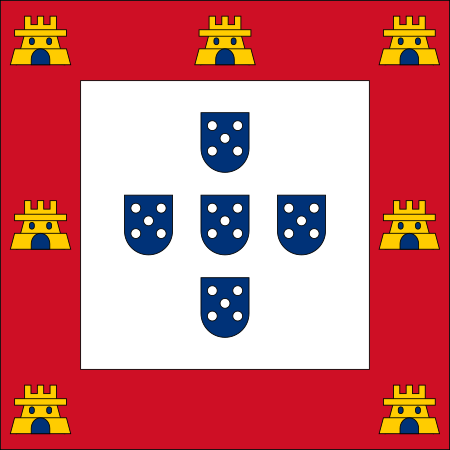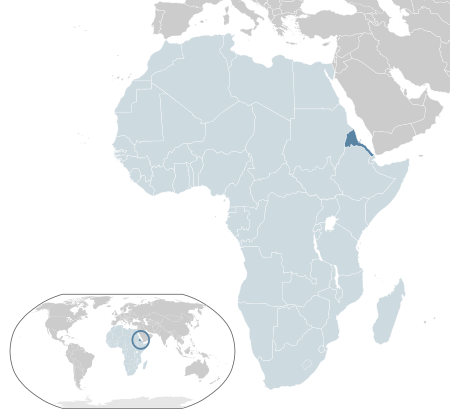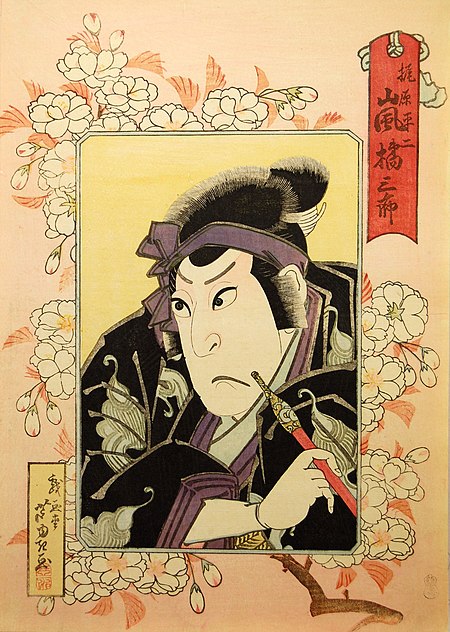The American Crisis
| |||||||||||||||||||||||||||||||||||||||||||||||||||||||||||||
Read other articles:

United States historic placeCoit Memorial TowerU.S. National Register of Historic PlacesSan Francisco Designated Landmark No. 165 View of Coit Tower in August 2021Coit TowerShow map of San Francisco CountyCoit TowerShow map of CaliforniaCoit TowerShow map of the United StatesLocation1 Telegraph Hill Blvd.San Francisco, CaliforniaCoordinates37°48′09″N 122°24′21″W / 37.80250°N 122.40583°W / 37.80250; -122.40583Area1.7 acres (0.69 ha)Built1933Archi…

Secondo la mitologia greca, i Mini - agg. minio, minia, minie, minii - (in greco Μινύες, Minyes), furono un gruppo autoctono abitante la regione egea. Tuttavia, l'estensione con cui la preistoria del mondo egeo viene riflessa nei resoconti letterari di popoli leggendari è soggetta a ripetute revisioni. Prima della seconda guerra mondiale, gli archeologi talvolta applicarono il termine Mini in modo diverso, per indicare la prima vera ondata di popoli parlanti il protogreco nel II millennio…

John Barly, D.D. was a priest and academic at the end of the 15th century and the beginning of the 16th.[1] Barly was educated at Gonville Hall, Cambridge graduating B.A. in 1461 and M.A. in 1465. He was a Fellow of Gonville from 1466 to 1483; and held livings at Barningham Wynter, Mattishall and Winterton. He was Master of Gonville (and Rector of St Michael Coslany, Norwich) from 1483 until his death in 1504.[2] References ^ Alumni Cantabrigienses: A Biographical List of All Kno…

Mythical creature of North American folklore This article has multiple issues. Please help improve it or discuss these issues on the talk page. (Learn how and when to remove these template messages) This article needs additional citations for verification. Please help improve this article by adding citations to reliable sources. Unsourced material may be challenged and removed.Find sources: Tailypo – news · newspapers · books · scholar · JSTOR (June 2020)…

الإمبراطورية البرتغالية الإمبراطورية البرتغالية Império Português ↓ 1415–1999 ↓ الإمبراطورية البرتغاليةعلم البرتغال الإمبراطورية البرتغاليةشعار البرتغال المناطق التي كانت خاضعة للإمبراطورية البرتغالية حول العالم عاصمة لشبونةريو دي جانيرو نظام الحكم ملكية (1415–1910)جمهورية…

La définition de la paysannerie est, au XVIIIe siècle, encore assez floue. Le paysan, c’est celui qui vit à la campagne, en milieu rural. Sa condition est aussi caractérisée par une activité : le travail de la terre. Dans la société trifonctionnelle, le paysan fait partie de l’ordre des laboratores. À la fin de l’Ancien Régime, le monde clos de la paysannerie représente plus de 80 % de la population française[1]. Le XVIIIe siècle n’a pas connu de révolution…

ヨハネス12世 第130代 ローマ教皇 教皇就任 955年12月16日教皇離任 964年5月14日先代 アガペトゥス2世次代 レオ8世個人情報出生 937年スポレート公国(中部イタリア)スポレート死去 964年5月14日 教皇領、ローマ原国籍 スポレート公国親 父アルベリーコ2世(スポレート公)、母アルダその他のヨハネステンプレートを表示 ヨハネス12世(Ioannes XII、937年 - 964年5月14日)は、ロー…

هذه المقالة يتيمة إذ تصل إليها مقالات أخرى قليلة جدًا. فضلًا، ساعد بإضافة وصلة إليها في مقالات متعلقة بها. (مارس 2019) الانتخابات البرلمانية الأندلسية 2012 2012 البلد إسبانيا التاريخ 25 مارس 2012 الانتخابات البرلمانية الأندلسية 2008 [لغات أخرى] منصب عضو برلمان أندلو…

Запрос «Моторола» перенаправляется сюда; см. также другие значения. Motorola, Inc. Тип Публичная компания Листинг на бирже NYSE: MOT Основание 1928 Упразднена 2011 Причина упразднения разделение Преемник Motorola Solutions Основатели Пол Галвин, Джозеф Галвин Расположение США: Шомберг (Ил…

1993 film directed by Brian De Palma Carlito's WayTheatrical release posterDirected byBrian De PalmaScreenplay byDavid KoeppBased onCarlito's Way and After Hoursby Edwin TorresProduced by Martin Bregman Willi Baer Michael S. Bregman Starring Al Pacino Sean Penn Penelope Ann Miller CinematographyStephen H. BurumEdited by Bill Pankow Kristina Boden Music byPatrick DoyleProductioncompanies Epic Productions Bregman/Baer Productions Distributed byUniversal PicturesRelease date November 12, …

Color television system in which the primary color information is transmitted in successive images A field-sequential color system (FSC) is a color television system in which the primary color information is transmitted in successive images and which relies on the human vision system to fuse the successive images into a color picture. One field-sequential system was developed by Peter Goldmark for CBS, which was its sole user in commercial broadcasting. It was first demonstrated to the press on …

يفتقر محتوى هذه المقالة إلى الاستشهاد بمصادر. فضلاً، ساهم في تطوير هذه المقالة من خلال إضافة مصادر موثوق بها. أي معلومات غير موثقة يمكن التشكيك بها وإزالتها. (ديسمبر 2018) مسجد معمر بن راشد معلومات عامة القرية أو المدينة الأنبار/ الرمادي الدولة العراق تاريخ بدء البناء 1400هـ/1980م �…

The location of Eritrea in Africa Part of a series onJews and Judaism Etymology Who is a Jew? Religion God in Judaism (names) Principles of faith Mitzvot (613) Halakha Shabbat Holidays Prayer Tzedakah Land of Israel Brit Bar and bat mitzvah Marriage Bereavement Baal teshuva Philosophy Ethics Kabbalah Customs Rites Synagogue Rabbi Texts Tanakh Torah Nevi'im Ketuvim Talmud Mishnah Gemara Rabbinic Midrash Tosefta Targum Beit Yosef Mishneh Torah Tur Shulchan Aruch Zohar History G…

USMC general officer (born 1947) Earl B. HailstonLtGen Earl Hailston, USMC (Ret)Born (1947-05-27) May 27, 1947 (age 77)Utica, New York, U.S.AllegianceUnited StatesService/branchUnited States Marine CorpsYears of service1967–2003RankLieutenant GeneralCommands heldUnited States Marine Corps Forces Pacific, U.S. Marine Forces Central CommandBattles/warsVietnam WarAwards~ Defense Distinguished Service MedalSilver StarLegion of MeritBronze Star with Combat V Earl B. Hailston (born May 27,…

Artikel ini perlu diwikifikasi agar memenuhi standar kualitas Wikipedia. Anda dapat memberikan bantuan berupa penambahan pranala dalam, atau dengan merapikan tata letak dari artikel ini. Untuk keterangan lebih lanjut, klik [tampil] di bagian kanan. Mengganti markah HTML dengan markah wiki bila dimungkinkan. Tambahkan pranala wiki. Bila dirasa perlu, buatlah pautan ke artikel wiki lainnya dengan cara menambahkan [[ dan ]] pada kata yang bersangkutan (lihat WP:LINK untuk keterangan lebih lanjut). …

نهائي دوري أبطال أوروبا 2019سيتضيف ملعب واندا ميتروبوليتانو في مدريد النهائيالحدثدوري أبطال أوروبا 2018–19 توتنهام هوتسبير ليفربول 0 2 التاريخ1 يونيو 2019 (2019-06-01)الملعبملعب واندا ميتروبوليتانو، مدريدالحكمدامير سكومينا الحضور63272 → 2018 2020 ← نهائي دوري أبطال أوروبا 2…

Gigadō AshiyukiBiographieDécès Date inconnueNom dans la langue maternelle 戯画堂芦幸Activités Peintre, dessinateur d'ukiyo-ePériode d'activité 1813-1835Autres informationsMaître Ashikuni Asayama (d)Exemples de la signature d'Ashiyuki, celle de droite se lit « Nagakuni »modifier - modifier le code - modifier Wikidata Gigadō Ashiyuki (戯画堂 芦幸) est un peintre japonais de style ukiyo-e à Osaka, actif de 1813 à 1833. Il est élève d'Asayama Ashikuni et poète de h…

United States Navy's first iron-hulled warship For other ships with the same name, see USS Michigan and USS Wolverine. USS Michigan, seen here after her name was changed to USS Wolverine in 1905. History United States NameMichigan Ordered19 May 1839 BuilderStackhouse and Tomlinson Laid down1839 Launched5 December 1840 Commissioned29 September 1844 Decommissioned6 May 1912 RenamedWolverine on 17 June 1905 Strickenc. 12 August 1923 FateScrapped in 1949 General characteristics Tonnage685 Length163&…

德爾塔(葡萄牙語:Delta),是巴西的城鎮,位於該國東南部,由米納斯吉拉斯州負責管轄,面積104平方公里,海拔高度500米,2010年人口8,089,人口密度每平方公里77.43人。 參考資料 IBGE Citybrazil Frigoletto Prefeitura de Campo Florido 这是一篇與巴西相關的地理小作品。您可以通过编辑或修订扩充其内容。查论编 查论编 米納斯吉拉斯州市鎮首府及最大城市:贝洛奥里藏特 巴巴塞納�…

Triaria (I secolo – I secolo) è stata una nobildonna romana. Vita Pittura medievale che rappresenta Triaria. Triaria (Giunia Calvina Milonia Caecena Alba Terentia)[1], fu la seconda moglie di Lucio Vitellio il Giovane (dopo che lui ebbe divorziato da Giunia Calvina) che fu console nel 48, e fratello dell'imperatore Aulo Vitellio. Nel 69 Triaria intercesse presso Flavio Sabino, con durezza e pressione non certo da donna[2], perché fosse condannato Gneo Cornelio Dolabella paren…

